Report on Customer Relationship and Segmentation for Tassie Fruit Beer
VerifiedAdded on 2022/08/19
|7
|1955
|17
Report
AI Summary
This report delves into the customer relationship and customer segmentation building blocks of the Tassie Fruit Beer business model. It explains the logic behind each building block, detailing the key resources needed, such as customer relationship management tools and marketing tools, and how these resources will be implemented to foster strong customer connections and identify the right target segments. The report analyzes how Tassie Fruit Beer can utilize mass marketing and geographic/demographic segmentation to reach its target audience, focusing on younger consumers in Tasmania. Furthermore, it emphasizes the importance of high-quality products, effective marketing, and feedback mechanisms to enhance customer satisfaction and brand image. The analysis concludes with a summary highlighting how these building blocks enable Tassie Fruit Beer to create, deliver, and capture value, ensuring long-term success in the competitive beverage market.
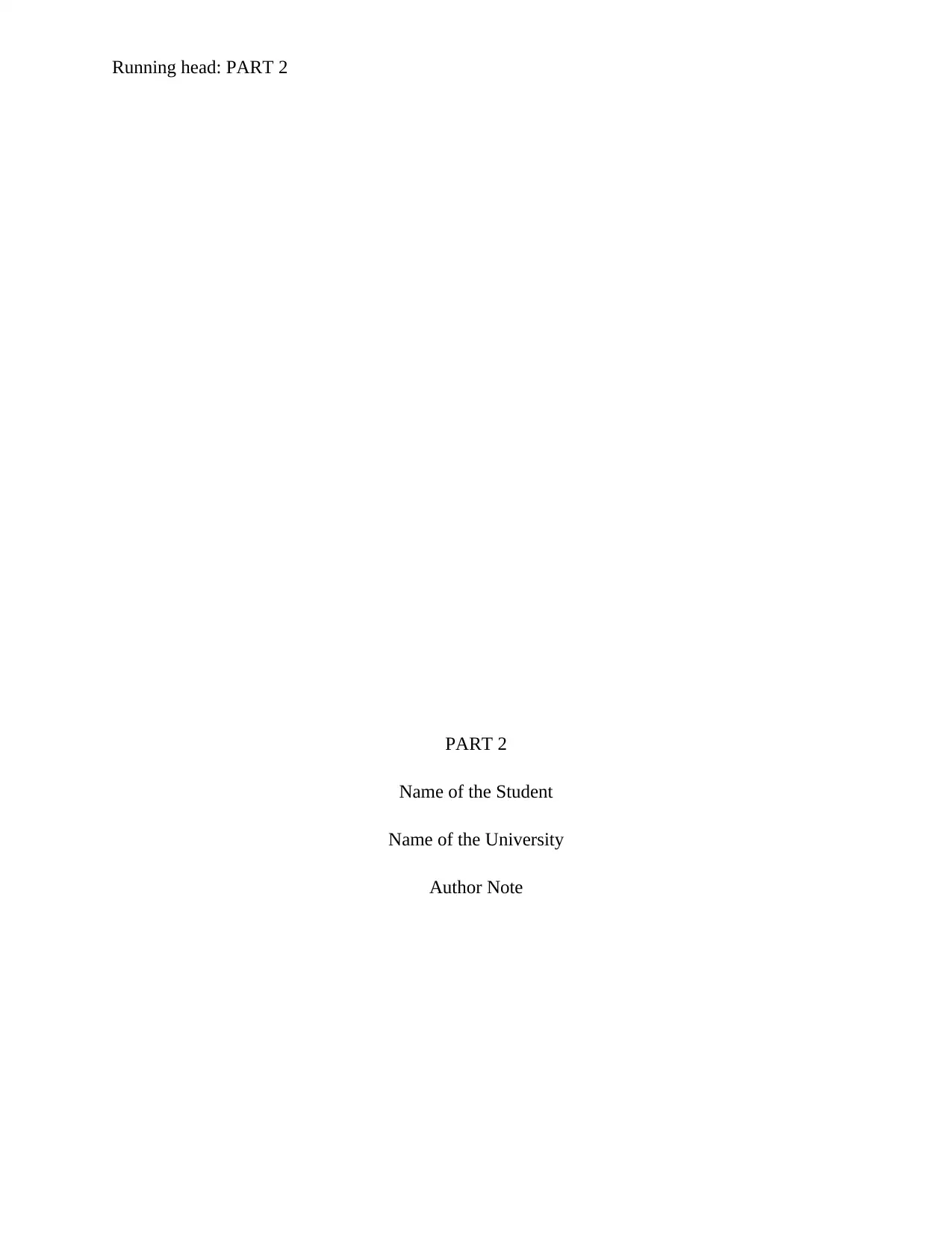
Running head: PART 2
PART 2
Name of the Student
Name of the University
Author Note
PART 2
Name of the Student
Name of the University
Author Note
Paraphrase This Document
Need a fresh take? Get an instant paraphrase of this document with our AI Paraphraser
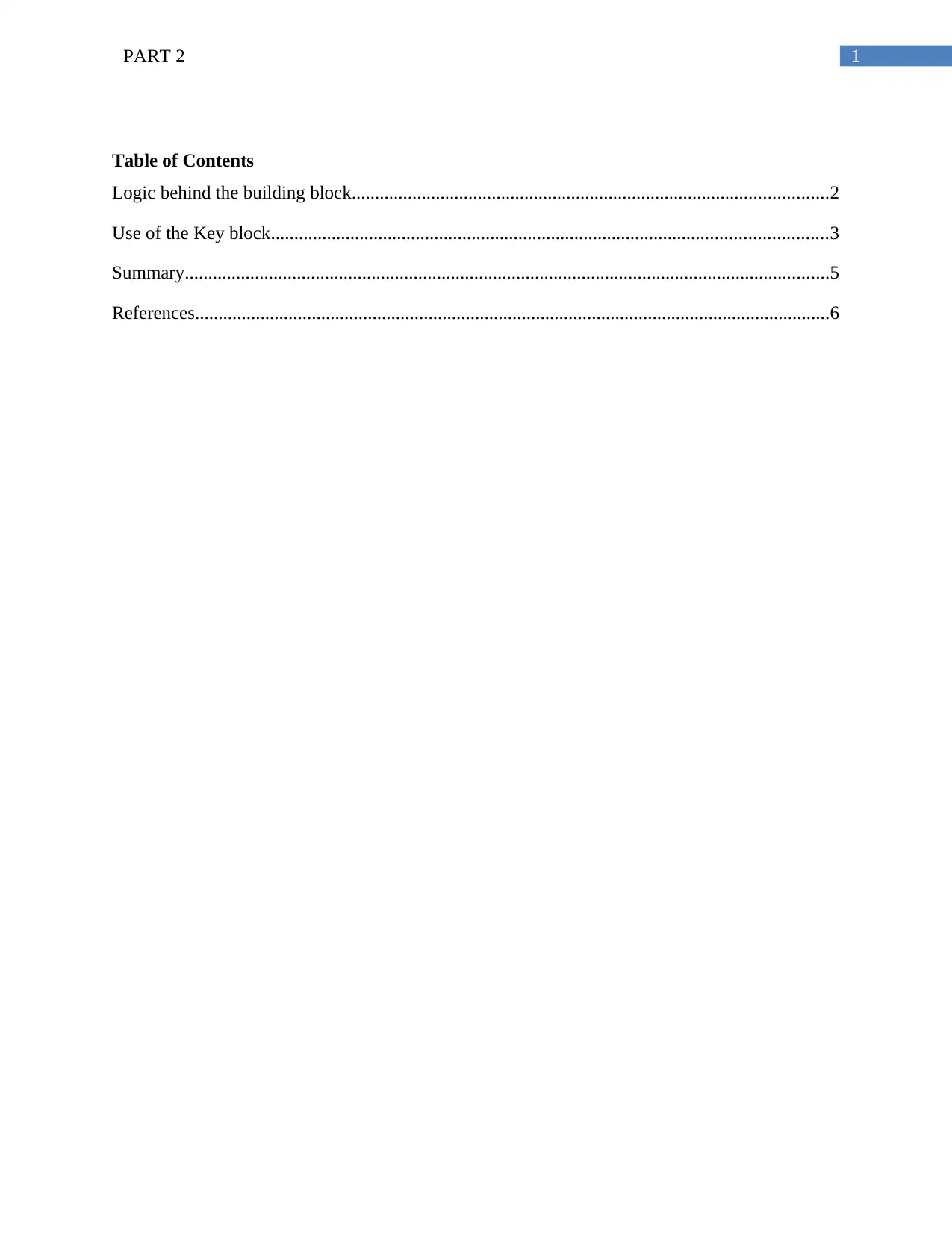
1PART 2
Table of Contents
Logic behind the building block......................................................................................................2
Use of the Key block.......................................................................................................................3
Summary..........................................................................................................................................5
References........................................................................................................................................6
Table of Contents
Logic behind the building block......................................................................................................2
Use of the Key block.......................................................................................................................3
Summary..........................................................................................................................................5
References........................................................................................................................................6
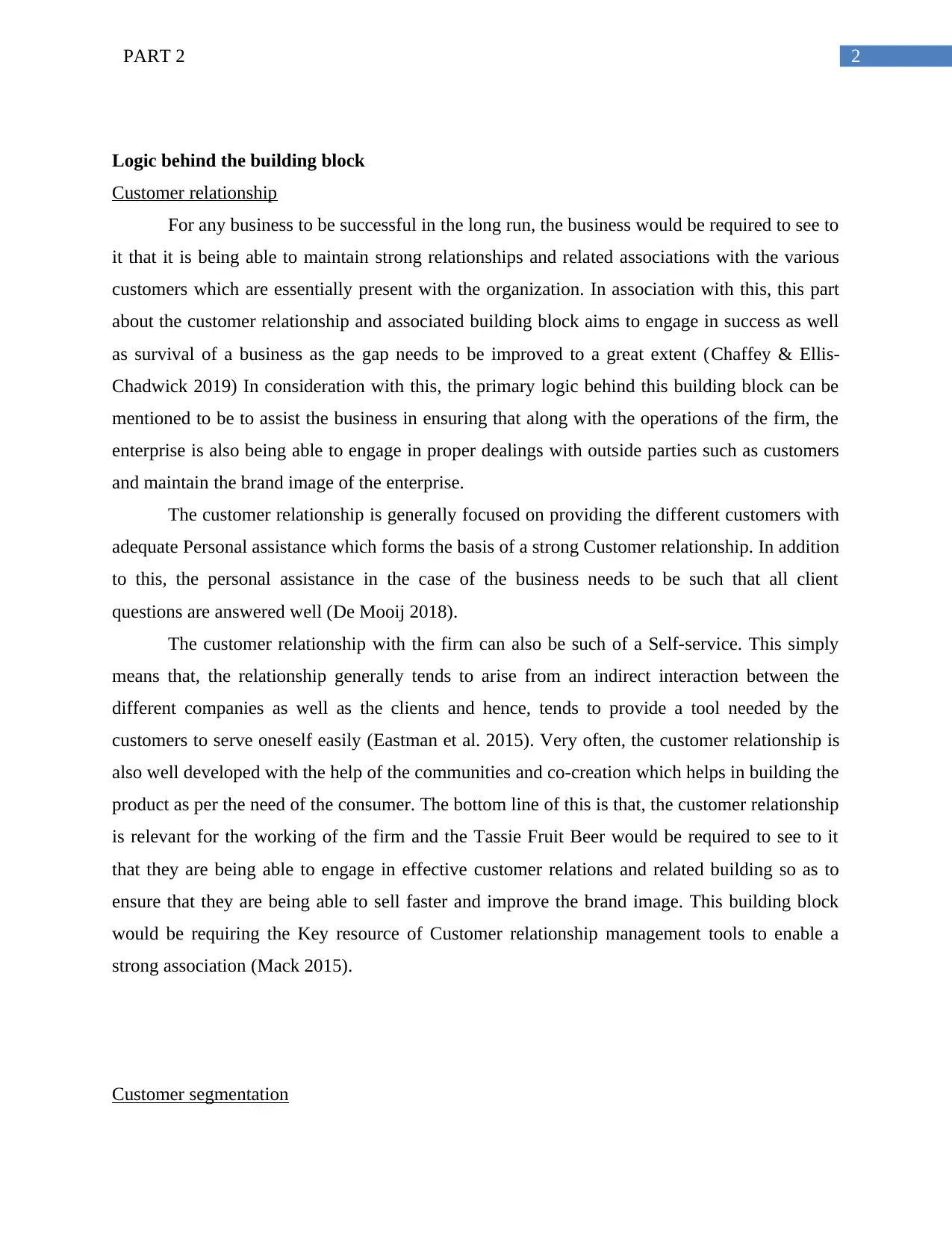
2PART 2
Logic behind the building block
Customer relationship
For any business to be successful in the long run, the business would be required to see to
it that it is being able to maintain strong relationships and related associations with the various
customers which are essentially present with the organization. In association with this, this part
about the customer relationship and associated building block aims to engage in success as well
as survival of a business as the gap needs to be improved to a great extent (Chaffey & Ellis-
Chadwick 2019) In consideration with this, the primary logic behind this building block can be
mentioned to be to assist the business in ensuring that along with the operations of the firm, the
enterprise is also being able to engage in proper dealings with outside parties such as customers
and maintain the brand image of the enterprise.
The customer relationship is generally focused on providing the different customers with
adequate Personal assistance which forms the basis of a strong Customer relationship. In addition
to this, the personal assistance in the case of the business needs to be such that all client
questions are answered well (De Mooij 2018).
The customer relationship with the firm can also be such of a Self-service. This simply
means that, the relationship generally tends to arise from an indirect interaction between the
different companies as well as the clients and hence, tends to provide a tool needed by the
customers to serve oneself easily (Eastman et al. 2015). Very often, the customer relationship is
also well developed with the help of the communities and co-creation which helps in building the
product as per the need of the consumer. The bottom line of this is that, the customer relationship
is relevant for the working of the firm and the Tassie Fruit Beer would be required to see to it
that they are being able to engage in effective customer relations and related building so as to
ensure that they are being able to sell faster and improve the brand image. This building block
would be requiring the Key resource of Customer relationship management tools to enable a
strong association (Mack 2015).
Customer segmentation
Logic behind the building block
Customer relationship
For any business to be successful in the long run, the business would be required to see to
it that it is being able to maintain strong relationships and related associations with the various
customers which are essentially present with the organization. In association with this, this part
about the customer relationship and associated building block aims to engage in success as well
as survival of a business as the gap needs to be improved to a great extent (Chaffey & Ellis-
Chadwick 2019) In consideration with this, the primary logic behind this building block can be
mentioned to be to assist the business in ensuring that along with the operations of the firm, the
enterprise is also being able to engage in proper dealings with outside parties such as customers
and maintain the brand image of the enterprise.
The customer relationship is generally focused on providing the different customers with
adequate Personal assistance which forms the basis of a strong Customer relationship. In addition
to this, the personal assistance in the case of the business needs to be such that all client
questions are answered well (De Mooij 2018).
The customer relationship with the firm can also be such of a Self-service. This simply
means that, the relationship generally tends to arise from an indirect interaction between the
different companies as well as the clients and hence, tends to provide a tool needed by the
customers to serve oneself easily (Eastman et al. 2015). Very often, the customer relationship is
also well developed with the help of the communities and co-creation which helps in building the
product as per the need of the consumer. The bottom line of this is that, the customer relationship
is relevant for the working of the firm and the Tassie Fruit Beer would be required to see to it
that they are being able to engage in effective customer relations and related building so as to
ensure that they are being able to sell faster and improve the brand image. This building block
would be requiring the Key resource of Customer relationship management tools to enable a
strong association (Mack 2015).
Customer segmentation
⊘ This is a preview!⊘
Do you want full access?
Subscribe today to unlock all pages.

Trusted by 1+ million students worldwide
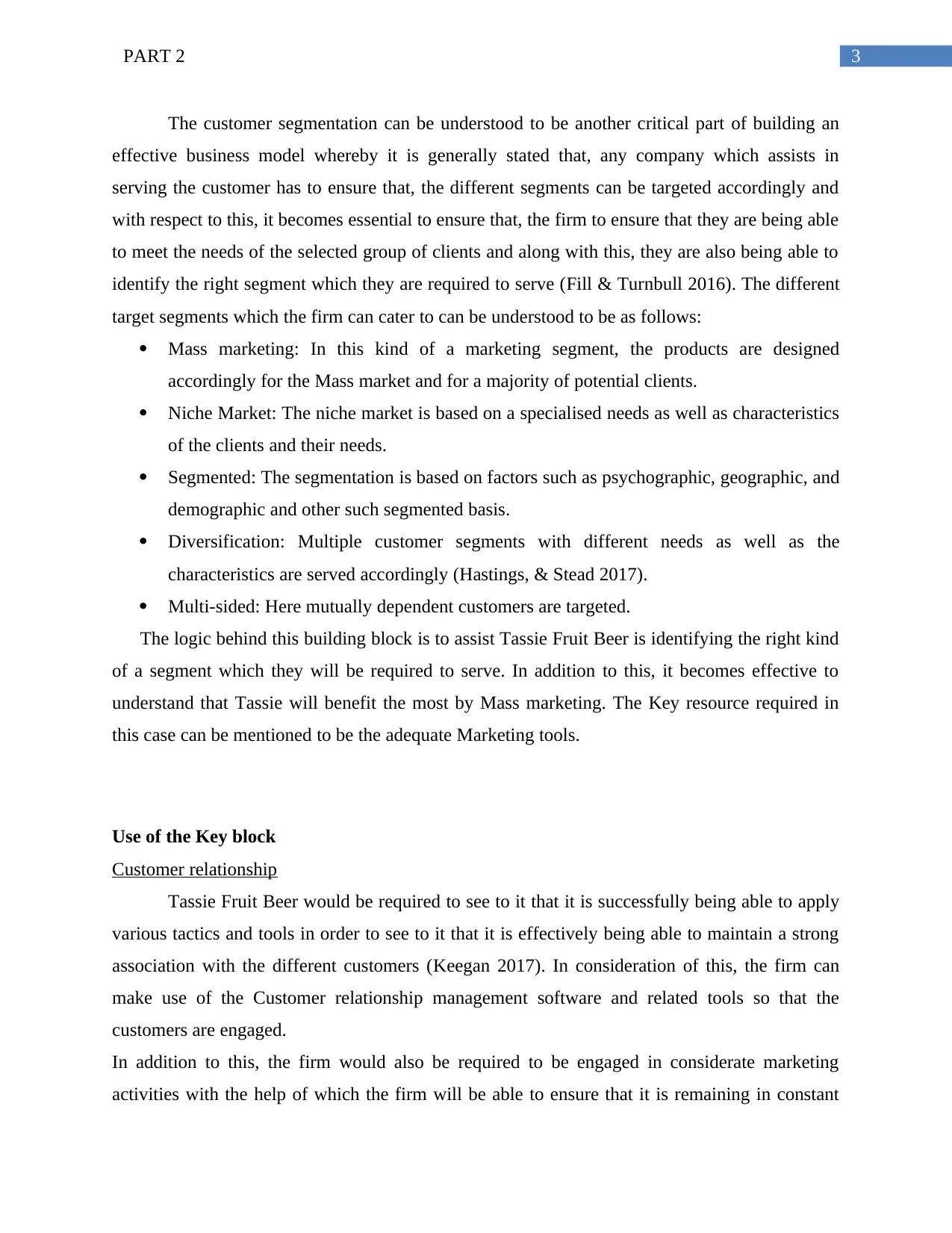
3PART 2
The customer segmentation can be understood to be another critical part of building an
effective business model whereby it is generally stated that, any company which assists in
serving the customer has to ensure that, the different segments can be targeted accordingly and
with respect to this, it becomes essential to ensure that, the firm to ensure that they are being able
to meet the needs of the selected group of clients and along with this, they are also being able to
identify the right segment which they are required to serve (Fill & Turnbull 2016). The different
target segments which the firm can cater to can be understood to be as follows:
Mass marketing: In this kind of a marketing segment, the products are designed
accordingly for the Mass market and for a majority of potential clients.
Niche Market: The niche market is based on a specialised needs as well as characteristics
of the clients and their needs.
Segmented: The segmentation is based on factors such as psychographic, geographic, and
demographic and other such segmented basis.
Diversification: Multiple customer segments with different needs as well as the
characteristics are served accordingly (Hastings, & Stead 2017).
Multi-sided: Here mutually dependent customers are targeted.
The logic behind this building block is to assist Tassie Fruit Beer is identifying the right kind
of a segment which they will be required to serve. In addition to this, it becomes effective to
understand that Tassie will benefit the most by Mass marketing. The Key resource required in
this case can be mentioned to be the adequate Marketing tools.
Use of the Key block
Customer relationship
Tassie Fruit Beer would be required to see to it that it is successfully being able to apply
various tactics and tools in order to see to it that it is effectively being able to maintain a strong
association with the different customers (Keegan 2017). In consideration of this, the firm can
make use of the Customer relationship management software and related tools so that the
customers are engaged.
In addition to this, the firm would also be required to be engaged in considerate marketing
activities with the help of which the firm will be able to ensure that it is remaining in constant
The customer segmentation can be understood to be another critical part of building an
effective business model whereby it is generally stated that, any company which assists in
serving the customer has to ensure that, the different segments can be targeted accordingly and
with respect to this, it becomes essential to ensure that, the firm to ensure that they are being able
to meet the needs of the selected group of clients and along with this, they are also being able to
identify the right segment which they are required to serve (Fill & Turnbull 2016). The different
target segments which the firm can cater to can be understood to be as follows:
Mass marketing: In this kind of a marketing segment, the products are designed
accordingly for the Mass market and for a majority of potential clients.
Niche Market: The niche market is based on a specialised needs as well as characteristics
of the clients and their needs.
Segmented: The segmentation is based on factors such as psychographic, geographic, and
demographic and other such segmented basis.
Diversification: Multiple customer segments with different needs as well as the
characteristics are served accordingly (Hastings, & Stead 2017).
Multi-sided: Here mutually dependent customers are targeted.
The logic behind this building block is to assist Tassie Fruit Beer is identifying the right kind
of a segment which they will be required to serve. In addition to this, it becomes effective to
understand that Tassie will benefit the most by Mass marketing. The Key resource required in
this case can be mentioned to be the adequate Marketing tools.
Use of the Key block
Customer relationship
Tassie Fruit Beer would be required to see to it that it is successfully being able to apply
various tactics and tools in order to see to it that it is effectively being able to maintain a strong
association with the different customers (Keegan 2017). In consideration of this, the firm can
make use of the Customer relationship management software and related tools so that the
customers are engaged.
In addition to this, the firm would also be required to be engaged in considerate marketing
activities with the help of which the firm will be able to ensure that it is remaining in constant
Paraphrase This Document
Need a fresh take? Get an instant paraphrase of this document with our AI Paraphraser
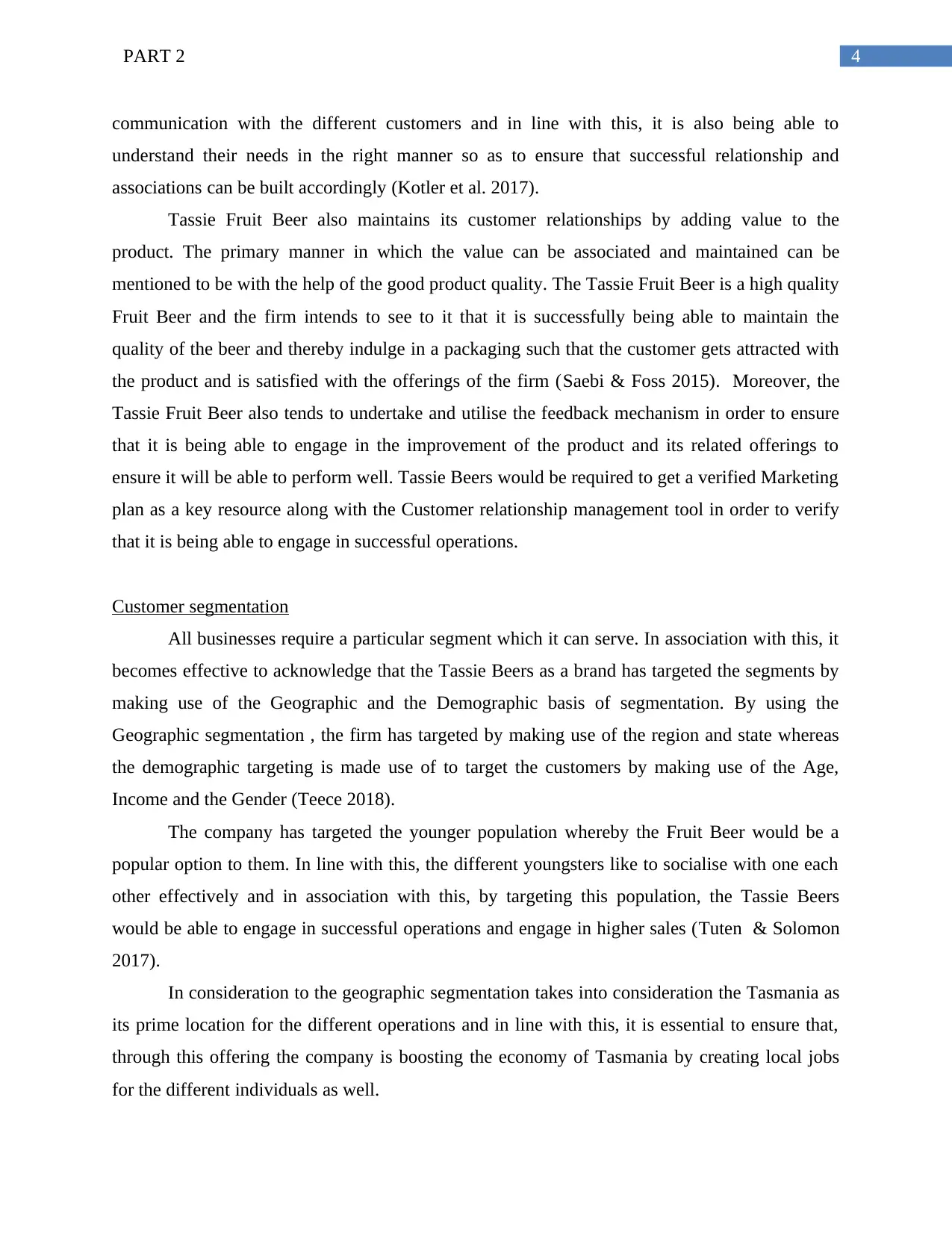
4PART 2
communication with the different customers and in line with this, it is also being able to
understand their needs in the right manner so as to ensure that successful relationship and
associations can be built accordingly (Kotler et al. 2017).
Tassie Fruit Beer also maintains its customer relationships by adding value to the
product. The primary manner in which the value can be associated and maintained can be
mentioned to be with the help of the good product quality. The Tassie Fruit Beer is a high quality
Fruit Beer and the firm intends to see to it that it is successfully being able to maintain the
quality of the beer and thereby indulge in a packaging such that the customer gets attracted with
the product and is satisfied with the offerings of the firm (Saebi & Foss 2015). Moreover, the
Tassie Fruit Beer also tends to undertake and utilise the feedback mechanism in order to ensure
that it is being able to engage in the improvement of the product and its related offerings to
ensure it will be able to perform well. Tassie Beers would be required to get a verified Marketing
plan as a key resource along with the Customer relationship management tool in order to verify
that it is being able to engage in successful operations.
Customer segmentation
All businesses require a particular segment which it can serve. In association with this, it
becomes effective to acknowledge that the Tassie Beers as a brand has targeted the segments by
making use of the Geographic and the Demographic basis of segmentation. By using the
Geographic segmentation , the firm has targeted by making use of the region and state whereas
the demographic targeting is made use of to target the customers by making use of the Age,
Income and the Gender (Teece 2018).
The company has targeted the younger population whereby the Fruit Beer would be a
popular option to them. In line with this, the different youngsters like to socialise with one each
other effectively and in association with this, by targeting this population, the Tassie Beers
would be able to engage in successful operations and engage in higher sales (Tuten & Solomon
2017).
In consideration to the geographic segmentation takes into consideration the Tasmania as
its prime location for the different operations and in line with this, it is essential to ensure that,
through this offering the company is boosting the economy of Tasmania by creating local jobs
for the different individuals as well.
communication with the different customers and in line with this, it is also being able to
understand their needs in the right manner so as to ensure that successful relationship and
associations can be built accordingly (Kotler et al. 2017).
Tassie Fruit Beer also maintains its customer relationships by adding value to the
product. The primary manner in which the value can be associated and maintained can be
mentioned to be with the help of the good product quality. The Tassie Fruit Beer is a high quality
Fruit Beer and the firm intends to see to it that it is successfully being able to maintain the
quality of the beer and thereby indulge in a packaging such that the customer gets attracted with
the product and is satisfied with the offerings of the firm (Saebi & Foss 2015). Moreover, the
Tassie Fruit Beer also tends to undertake and utilise the feedback mechanism in order to ensure
that it is being able to engage in the improvement of the product and its related offerings to
ensure it will be able to perform well. Tassie Beers would be required to get a verified Marketing
plan as a key resource along with the Customer relationship management tool in order to verify
that it is being able to engage in successful operations.
Customer segmentation
All businesses require a particular segment which it can serve. In association with this, it
becomes effective to acknowledge that the Tassie Beers as a brand has targeted the segments by
making use of the Geographic and the Demographic basis of segmentation. By using the
Geographic segmentation , the firm has targeted by making use of the region and state whereas
the demographic targeting is made use of to target the customers by making use of the Age,
Income and the Gender (Teece 2018).
The company has targeted the younger population whereby the Fruit Beer would be a
popular option to them. In line with this, the different youngsters like to socialise with one each
other effectively and in association with this, by targeting this population, the Tassie Beers
would be able to engage in successful operations and engage in higher sales (Tuten & Solomon
2017).
In consideration to the geographic segmentation takes into consideration the Tasmania as
its prime location for the different operations and in line with this, it is essential to ensure that,
through this offering the company is boosting the economy of Tasmania by creating local jobs
for the different individuals as well.
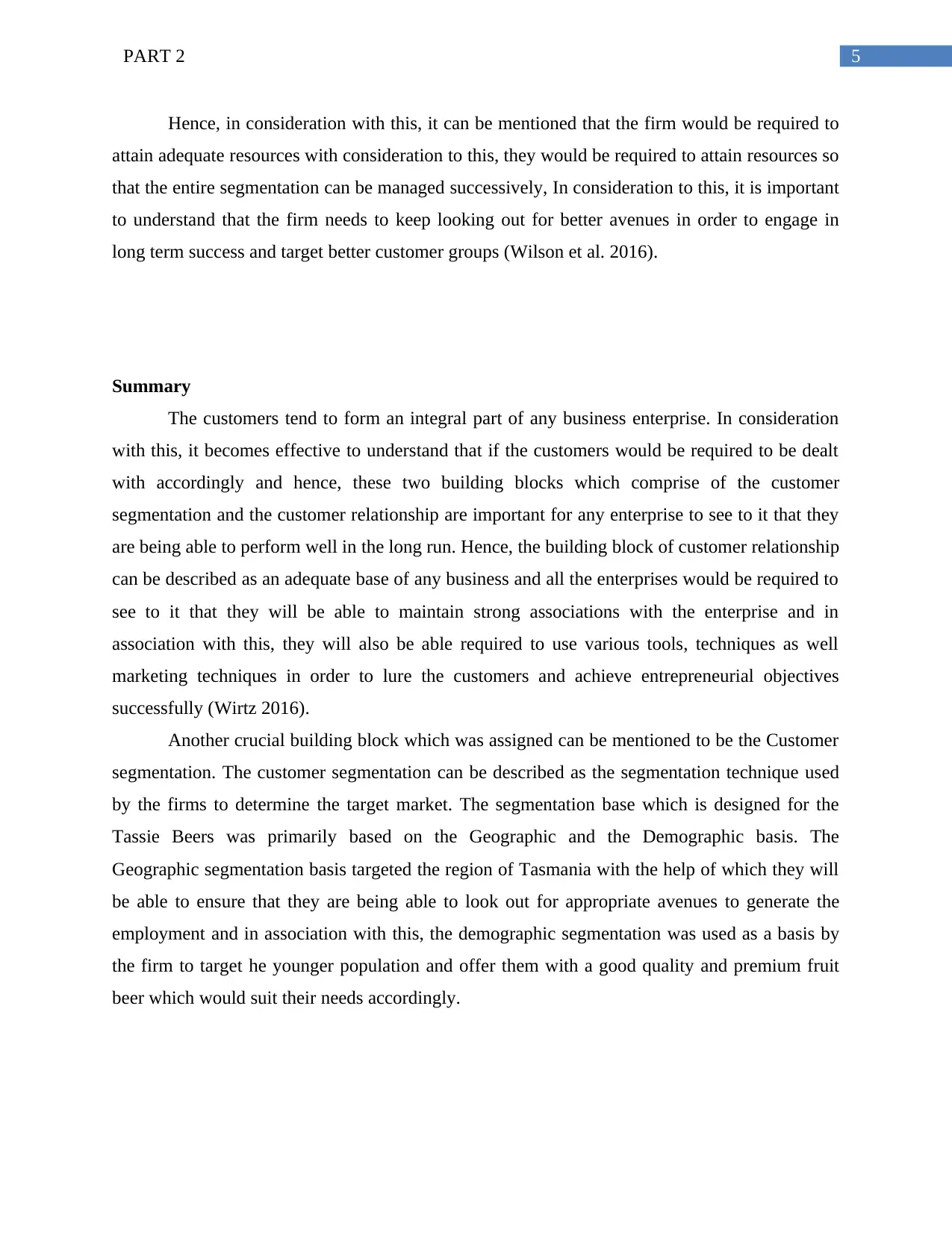
5PART 2
Hence, in consideration with this, it can be mentioned that the firm would be required to
attain adequate resources with consideration to this, they would be required to attain resources so
that the entire segmentation can be managed successively, In consideration to this, it is important
to understand that the firm needs to keep looking out for better avenues in order to engage in
long term success and target better customer groups (Wilson et al. 2016).
Summary
The customers tend to form an integral part of any business enterprise. In consideration
with this, it becomes effective to understand that if the customers would be required to be dealt
with accordingly and hence, these two building blocks which comprise of the customer
segmentation and the customer relationship are important for any enterprise to see to it that they
are being able to perform well in the long run. Hence, the building block of customer relationship
can be described as an adequate base of any business and all the enterprises would be required to
see to it that they will be able to maintain strong associations with the enterprise and in
association with this, they will also be able required to use various tools, techniques as well
marketing techniques in order to lure the customers and achieve entrepreneurial objectives
successfully (Wirtz 2016).
Another crucial building block which was assigned can be mentioned to be the Customer
segmentation. The customer segmentation can be described as the segmentation technique used
by the firms to determine the target market. The segmentation base which is designed for the
Tassie Beers was primarily based on the Geographic and the Demographic basis. The
Geographic segmentation basis targeted the region of Tasmania with the help of which they will
be able to ensure that they are being able to look out for appropriate avenues to generate the
employment and in association with this, the demographic segmentation was used as a basis by
the firm to target he younger population and offer them with a good quality and premium fruit
beer which would suit their needs accordingly.
Hence, in consideration with this, it can be mentioned that the firm would be required to
attain adequate resources with consideration to this, they would be required to attain resources so
that the entire segmentation can be managed successively, In consideration to this, it is important
to understand that the firm needs to keep looking out for better avenues in order to engage in
long term success and target better customer groups (Wilson et al. 2016).
Summary
The customers tend to form an integral part of any business enterprise. In consideration
with this, it becomes effective to understand that if the customers would be required to be dealt
with accordingly and hence, these two building blocks which comprise of the customer
segmentation and the customer relationship are important for any enterprise to see to it that they
are being able to perform well in the long run. Hence, the building block of customer relationship
can be described as an adequate base of any business and all the enterprises would be required to
see to it that they will be able to maintain strong associations with the enterprise and in
association with this, they will also be able required to use various tools, techniques as well
marketing techniques in order to lure the customers and achieve entrepreneurial objectives
successfully (Wirtz 2016).
Another crucial building block which was assigned can be mentioned to be the Customer
segmentation. The customer segmentation can be described as the segmentation technique used
by the firms to determine the target market. The segmentation base which is designed for the
Tassie Beers was primarily based on the Geographic and the Demographic basis. The
Geographic segmentation basis targeted the region of Tasmania with the help of which they will
be able to ensure that they are being able to look out for appropriate avenues to generate the
employment and in association with this, the demographic segmentation was used as a basis by
the firm to target he younger population and offer them with a good quality and premium fruit
beer which would suit their needs accordingly.
⊘ This is a preview!⊘
Do you want full access?
Subscribe today to unlock all pages.

Trusted by 1+ million students worldwide
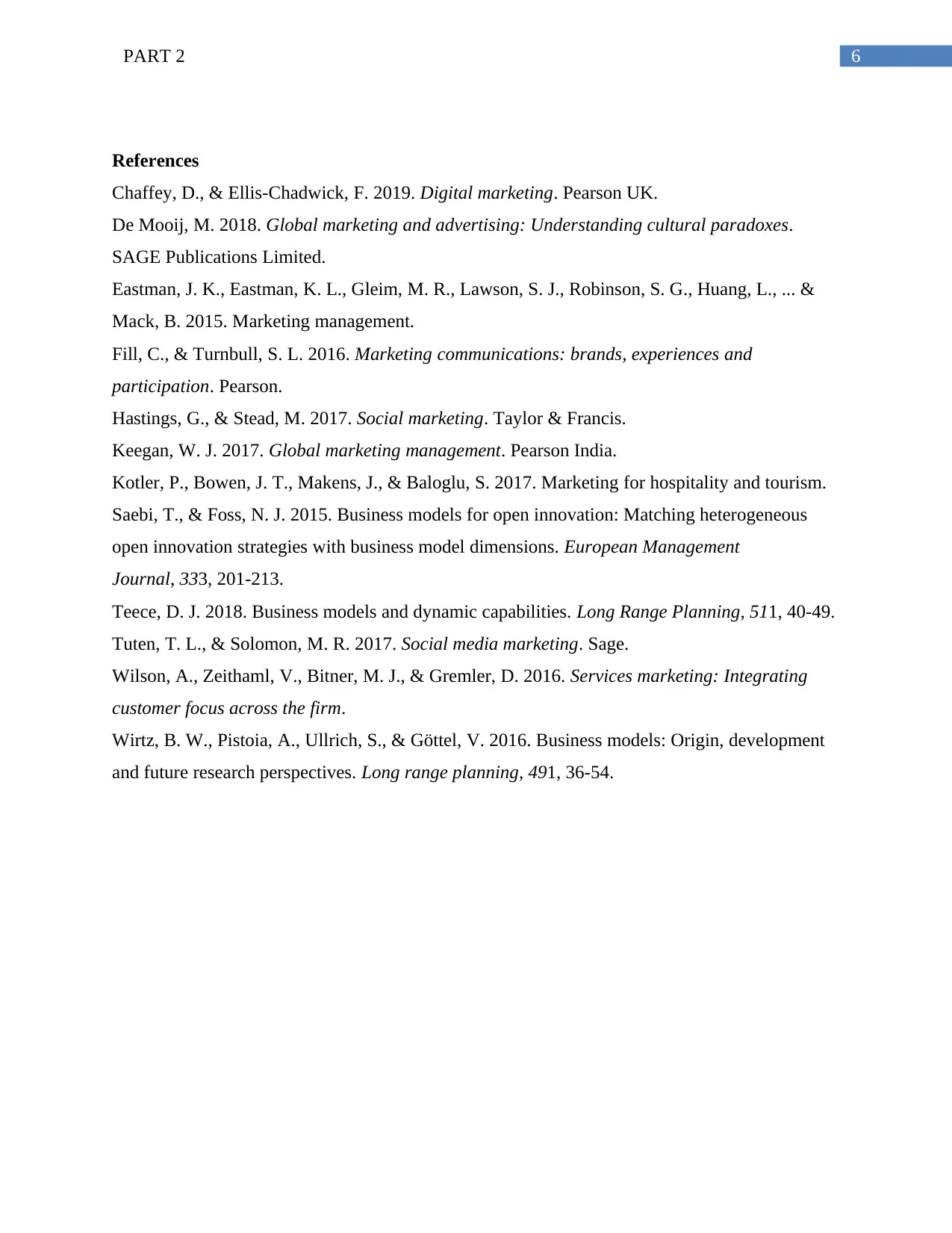
6PART 2
References
Chaffey, D., & Ellis-Chadwick, F. 2019. Digital marketing. Pearson UK.
De Mooij, M. 2018. Global marketing and advertising: Understanding cultural paradoxes.
SAGE Publications Limited.
Eastman, J. K., Eastman, K. L., Gleim, M. R., Lawson, S. J., Robinson, S. G., Huang, L., ... &
Mack, B. 2015. Marketing management.
Fill, C., & Turnbull, S. L. 2016. Marketing communications: brands, experiences and
participation. Pearson.
Hastings, G., & Stead, M. 2017. Social marketing. Taylor & Francis.
Keegan, W. J. 2017. Global marketing management. Pearson India.
Kotler, P., Bowen, J. T., Makens, J., & Baloglu, S. 2017. Marketing for hospitality and tourism.
Saebi, T., & Foss, N. J. 2015. Business models for open innovation: Matching heterogeneous
open innovation strategies with business model dimensions. European Management
Journal, 333, 201-213.
Teece, D. J. 2018. Business models and dynamic capabilities. Long Range Planning, 511, 40-49.
Tuten, T. L., & Solomon, M. R. 2017. Social media marketing. Sage.
Wilson, A., Zeithaml, V., Bitner, M. J., & Gremler, D. 2016. Services marketing: Integrating
customer focus across the firm.
Wirtz, B. W., Pistoia, A., Ullrich, S., & Göttel, V. 2016. Business models: Origin, development
and future research perspectives. Long range planning, 491, 36-54.
References
Chaffey, D., & Ellis-Chadwick, F. 2019. Digital marketing. Pearson UK.
De Mooij, M. 2018. Global marketing and advertising: Understanding cultural paradoxes.
SAGE Publications Limited.
Eastman, J. K., Eastman, K. L., Gleim, M. R., Lawson, S. J., Robinson, S. G., Huang, L., ... &
Mack, B. 2015. Marketing management.
Fill, C., & Turnbull, S. L. 2016. Marketing communications: brands, experiences and
participation. Pearson.
Hastings, G., & Stead, M. 2017. Social marketing. Taylor & Francis.
Keegan, W. J. 2017. Global marketing management. Pearson India.
Kotler, P., Bowen, J. T., Makens, J., & Baloglu, S. 2017. Marketing for hospitality and tourism.
Saebi, T., & Foss, N. J. 2015. Business models for open innovation: Matching heterogeneous
open innovation strategies with business model dimensions. European Management
Journal, 333, 201-213.
Teece, D. J. 2018. Business models and dynamic capabilities. Long Range Planning, 511, 40-49.
Tuten, T. L., & Solomon, M. R. 2017. Social media marketing. Sage.
Wilson, A., Zeithaml, V., Bitner, M. J., & Gremler, D. 2016. Services marketing: Integrating
customer focus across the firm.
Wirtz, B. W., Pistoia, A., Ullrich, S., & Göttel, V. 2016. Business models: Origin, development
and future research perspectives. Long range planning, 491, 36-54.
1 out of 7
Related Documents
Your All-in-One AI-Powered Toolkit for Academic Success.
+13062052269
info@desklib.com
Available 24*7 on WhatsApp / Email
![[object Object]](/_next/static/media/star-bottom.7253800d.svg)
Unlock your academic potential
Copyright © 2020–2025 A2Z Services. All Rights Reserved. Developed and managed by ZUCOL.





